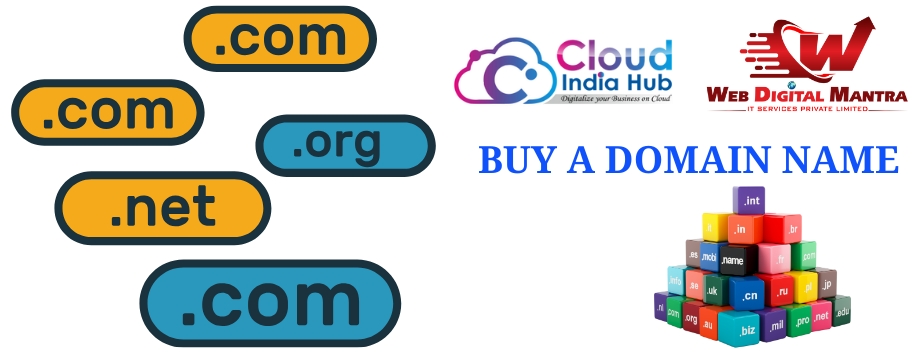
Whether you are launching a personal blog, starting an online store, or building a corporate website, the first step is to buy a domain name. Your domain is not just a web address; it’s your brand’s online representation, your credibility marker, and the gateway to your audience.
But with so many options, prices, and providers, the process of domain purchase can seem confusing especially if you’re looking for a cheap domain without compromising quality. In this comprehensive guide, we’ll walk you through everything you need to know before you buy domain for your online presence.
A domain name is the unique web address that people type into their browsers to access your site. For example, “google.com” and “amazon.in” are domain names.
A domain name typically consists of:
Name The chosen brand or keyword (e.g., "mybusiness").
Extension Also known as TLD (Top-Level Domain), like .com, .net, .org, .in, .co.
When you buy a domain name, you’re essentially renting the rights to use that name for a certain period usually one year renewable indefinitely.
Buying a domain is the first step toward establishing your online identity. Here’s why it matters:
Professionalism – A branded domain looks more credible than a free subdomain.
Brand Control – You own your name and can protect it from competitors.
Search Engine Benefits – Domains with relevant keywords can help with SEO.
Marketing Advantage – Easy-to-remember domains boost brand recall.
Email Hosting – A domain allows you to create custom emails like info@yourdomain.com.
1. Choose a Strong Domain Name
Before you proceed with a domain purchase, think about your brand’s identity. Your domain name should be:
Short and Memorable – Easy to spell and recall.
Relevant – Reflects your business or niche.
Avoids Hyphens & Numbers – Simpler to share verbally.
Keyword-Friendly – Especially useful for SEO purposes.
Example: If you’re selling handmade candles, a domain like cozycandles.com is better than handmade-candlez-123.com.
2. Pick the Right Extension
The domain extension (.com, .in, .net, etc.) plays a role in brand positioning.
.com – Most popular, global reach.
.in – Perfect for Indian businesses.
.org – Common for non-profits.
.co – Startup-friendly.
.shop – Ideal for e-commerce.
If you’re looking for a cheap domain name, sometimes less common extensions offer better pricing without losing credibility.
3. Find a Trusted Domain Registrar
A registrar is a company that sells domain names. Popular registrars include:
Cloud India Hub
Namecheap
GoDaddy
Hostinger
Bluehost
Always choose a registrar that offers competitive prices, renewal transparency, and security features.
4. Search for Availability
Use the registrar’s search tool to see if your desired domain is available. If your first choice is taken, consider:
Slight variations.
Adding a location keyword (e.g., mybrandindia.com).
Choosing a different extension.
5. Check for Discounts on Cheap Domains
Many registrars offer cheap domain deals for first-time buyers. Some tips:
Look for seasonal offers or coupon codes.
Consider new TLDs that often have lower prices.
Watch for renewal rates some domains are cheap initially but expensive to renew.
6. Complete the Domain Purchase
Once you find the perfect domain, proceed to checkout. You’ll need to:
Create an account with the registrar.
Provide contact details (as per ICANN rules).
Decide on add-ons like privacy protection (to hide your personal info in WHOIS records).
Pay for at least one year (some providers offer discounts for multi-year purchases).
7. Secure Your Domain
After purchase:
Enable domain lock to prevent unauthorized transfers.
Set up auto-renew to avoid accidental expiration.
Keep your account details secure.
The cost varies depending on:
Extension – .com is often pricier than newer TLDs.
Registrar Pricing – Each registrar sets their own rates.
Premium Domains – Short, brandable names can cost hundreds or thousands.
If your priority is a cheap domain name, these registrars are worth checking:
Cloud India Hub – Affordable rates, free privacy protection.
Hostinger – Often bundles free domains with hosting plans.
GoDaddy – Frequent promotional offers for first-year domains.
Dynadot – Competitive rates and clean interface.
Focusing Only on Price – A super cheap domain might have high renewal costs.
Ignoring Trademarks – Avoid legal trouble by checking if the name is trademarked.
Choosing a Confusing Name – Complicated spelling can lose traffic.
Not Enabling Privacy Protection – Protects you from spam and data exposure.
Forgetting Renewals – Expired domains can be bought by competitors.
Some companies offer free or discounted domains when you purchase web hosting. This is a great way to save if you plan to launch your site immediately. Benefits include:
Easy integration between hosting and domain.
One-stop billing and support.
Potential cost savings on initial domain purchase.
However, if you want flexibility, buying your domain separately from hosting gives you more control.
When you buy a domain name, you’re securing your brand’s place in the digital world. A good domain is an investment whether you’re aiming for a premium brand name or hunting for a cheap domain name, the key is to choose something memorable, relevant, and future-proof.
Don’t rush the decision. Research your registrar, compare prices, and always check renewal rates before completing your domain purchase.
With the right approach, you can buy domain that fits your budget today and serves as the foundation of your online success for years to come.
Q1: Can I buy a domain permanently?
No, you can only register a domain for a set period (1–10 years) and renew it before it expires.
Q2: What is the cheapest domain extension?
Extensions like .xyz, .online, and .site are often the cheapest.
Q3: Is it safe to buy domains online?
Yes, if you use trusted registrars with secure payment gateways.
Q4: Can I buy a domain without a website?
Absolutely. You can purchase a domain now and build a website later.
 Ganesh B R
Ganesh B R
Copyright @2020. All Rights Reserved by WEB DIGITAL MANTRA IT SERVICES PVT LTD
Post Reviews